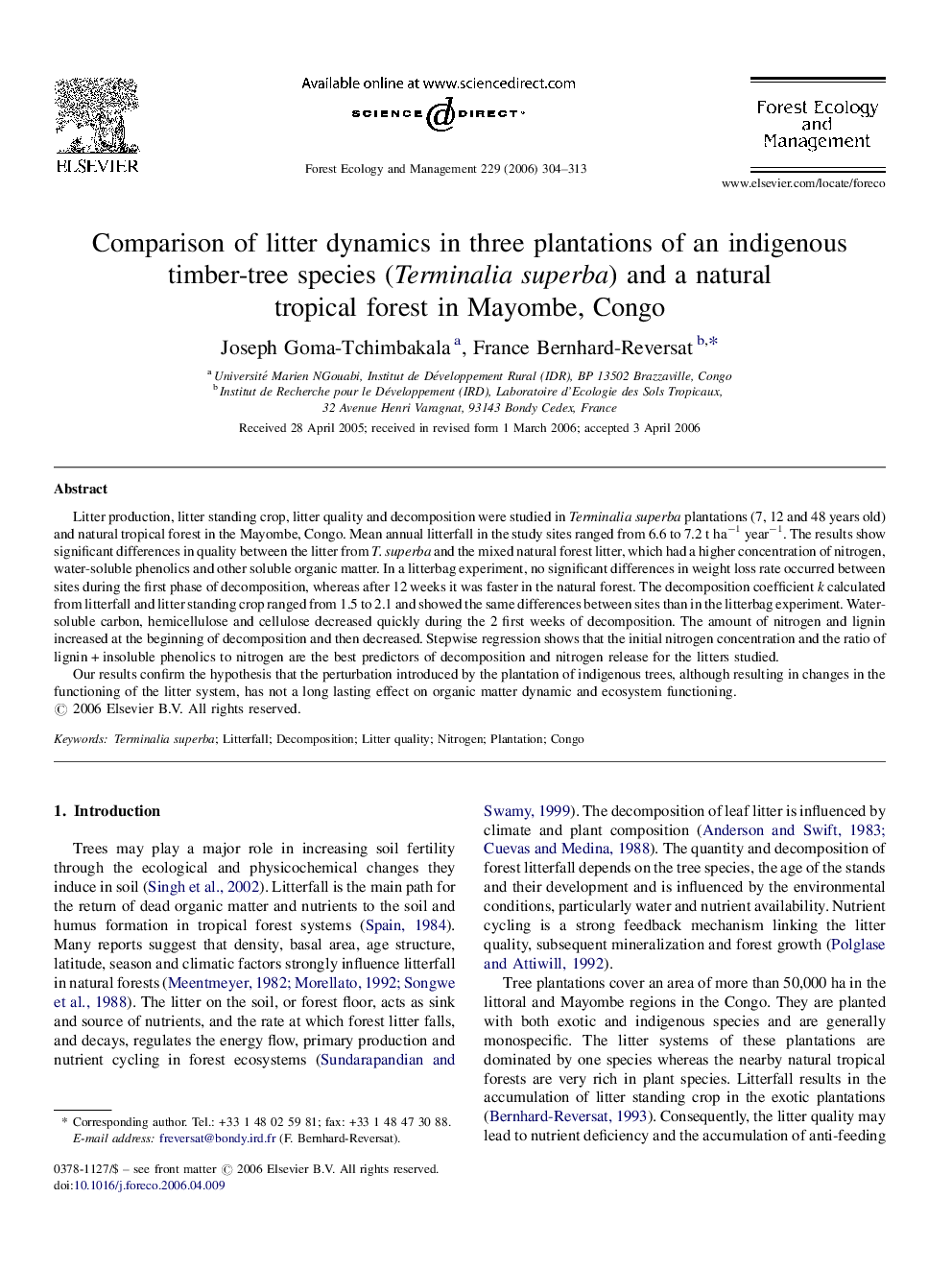| Article ID | Journal | Published Year | Pages | File Type |
|---|---|---|---|---|
| 90848 | Forest Ecology and Management | 2006 | 10 Pages |
Litter production, litter standing crop, litter quality and decomposition were studied in Terminalia superba plantations (7, 12 and 48 years old) and natural tropical forest in the Mayombe, Congo. Mean annual litterfall in the study sites ranged from 6.6 to 7.2 t ha−1 year−1. The results show significant differences in quality between the litter from T. superba and the mixed natural forest litter, which had a higher concentration of nitrogen, water-soluble phenolics and other soluble organic matter. In a litterbag experiment, no significant differences in weight loss rate occurred between sites during the first phase of decomposition, whereas after 12 weeks it was faster in the natural forest. The decomposition coefficient k calculated from litterfall and litter standing crop ranged from 1.5 to 2.1 and showed the same differences between sites than in the litterbag experiment. Water-soluble carbon, hemicellulose and cellulose decreased quickly during the 2 first weeks of decomposition. The amount of nitrogen and lignin increased at the beginning of decomposition and then decreased. Stepwise regression shows that the initial nitrogen concentration and the ratio of lignin + insoluble phenolics to nitrogen are the best predictors of decomposition and nitrogen release for the litters studied.Our results confirm the hypothesis that the perturbation introduced by the plantation of indigenous trees, although resulting in changes in the functioning of the litter system, has not a long lasting effect on organic matter dynamic and ecosystem functioning.
